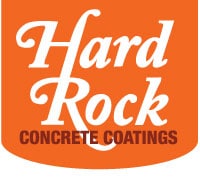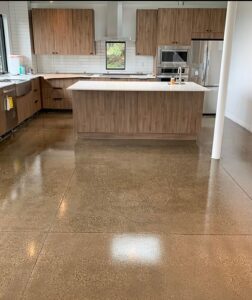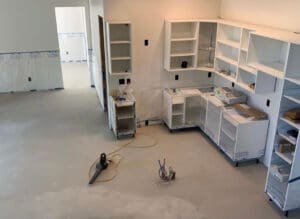Homes that were built in the last half-century were constructed with concrete in mind; driveways, concrete walkways, and basement floors are all made of concrete. Concrete is ideal for surfaces that experience high levels of foot traffic because it’s sturdy and long-lasting. While concrete is a hard, durable surface, this does not make it exempt from showing signs of use and aging.
After years of walking all over the concrete, cracks will appear, and in some cases, weeds are bound to sprout. Aging concrete is an eyesore that will stress you out, but fortunately, concrete can be restored. The process of concrete restoration is called resurfacing. Resurfacing is when concrete is cleaned, repaired, and overlaid with a fresh surface.
The Process of Concrete Resurfacing
Here is a step-by-step process to resurfacing your concrete:
Cleaning: Surfaces showing wear and tear should be washed with a power washer that takes care of dirt and grime.
Repairing cracks: Cracks should be primed, reinforced with fabric, then coated with polymer concrete. Smooth the polymer concrete out evenly with the rest of the concrete in your driveway.
Hole reparation: Fill in holes with epoxy mortar.
Covering up: After all repairs are made, prime and cover your concrete surface with spray-on polymer concrete. Dry off with an old towel.
Coloring and sealing: If you’re looking for more vibrant concrete, you can apply decorative coloring. Apply a seal coat that will protect your new surface from rain or snow.
Curing: Now, it’s time to wait. Plan on not using your concrete driveway for the next 2-3 days or until your surface is completely dry.
Be aware that resurfacing your concrete is difficult, tiring work. This process is not for people who do not have patience, but it’s still more feasible than tearing out your concrete and pouring concrete for a whole new surface.
Increasing Concrete’s Appeal After Resurfacing
Fixing aging concrete starts as a basic project, but when you realize how much work goes into concrete resurfacing, you’ll want to get the most out of your surface. Homeowners justify spending so much energy on intensive concrete resurfacing because it makes their concrete look good as new.
People who successfully resurface their concrete usually consider concrete staining afterward. Concrete staining compliments concrete resurfacing because it is capable of creating vibrant colors and different kinds of desired effects. The look of distressed leather, natural stone, wood, and colorful murals can all be achieved by staining your concrete. If you don’t think concrete staining goes with the style of your home, here are other ways to personalize your concrete:
Overlays: Flagstone, brick, or stone patterns.
Sawcut patterns: Patterns that are either symmetrical or random.
Stamping or etching: Patterns are carved into the surface to give the look of stone or brick at a fraction of the cost.
Is your concrete full of unsightly cracks or dings? If your answer is yes, then it’s crucial to repair your concrete fast—before it becomes a safety hazard. You can try to resurface concrete on your own, but you’re better off calling experts.
Hard Rock Concrete Coatings boasts years of experience in repairing concrete mishaps and damages, both big and small. Contact us today.



